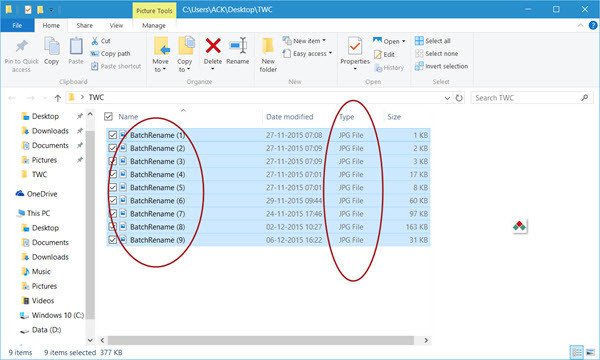
:max_bytes(150000):strip_icc()/Batch_Rename_Files_02-c65d61d282e64e9d9f35017736d6f5c2.jpg)
- Batch file rename files in directory how to#
- Batch file rename files in directory code#
- Batch file rename files in directory windows#

Batch file rename files in directory how to#
Powershell would also be an option but I know even less about how to do it in there.
Batch file rename files in directory code#
Can someone help me out? I vaguely understand what the code is doing but not enough to manipulate it into doing what I want. If there are multiple files in the directory it errors out that it can't merge multiple files into a single file (which makes sense, it can't rename all files to 1 file.īut I'm stuck. It renames it in the format I want (but uses current date and time, not sure how to use modified or created date instead) and moves it correctly. Move "c:\test\source\*.csv" "c:\test\destination\File_%stamp%.csv" echo offįor /f "delims=" %%a in ('wmic OS Get localdatetime ^| find "."') do set dt=%%a I've pieced it together from google and it works in a fashion but doesn't do quite what I want. (I can schedule it to run multiple times a day to pick up any that weren't processed before.
Batch file rename files in directory windows#
When it comes to batch deleting files on Windows 10, you have a few options. This command works from the top of the file directory downwards, changing batch renaming matching files in each subfolder. One thing you can do with PowerShell is batch rename files throughout an entire directory, rather than a single folder. Dir | Rename-Item –NewName īatch Rename Filenames Throughout Entire Directory One option is to replace part of the filename with something else, which is handy for replacing files from a digital camera. PowerShell offers a few different options for batch renaming filenames. If your filename includes spaces, you'll need to use quotation marks around the filenames, like so: Rename-Item "file name with spaces.jpg" "new file name with spaces.jpg" If you want to rename a single file, use the following command: Rename-Item filename.jpg newfilename.jpg How about adding a suffix to a group of files? You can do that using the following command:įrom here, you can begin batch renaming filenames with PowerShell. Here, the question mark wildcard acts as any character, allowing the command to find any matching files while outputting the renamed files. For example, if you want to change the number of digits in your file names, you can use the following command: ren document?.txt document3?.txt If you want to rename multiple files, you can use the wildcard characters to make changes. The command to rename a single file is: ren filename.jpg newfilename.jpg Type dir and press Enter to see the list of files. Head to the folder containing the files you wish to rename, hit Shift + Right Click, and select Open a command window here. The command allows for the wildcard characters "*" and "?" as well as changing file extensions, though it doesn't permit you to move files into different folders after renaming.

You can use the ren command to rename multiple files simultaneously. The Windows Command Prompt offers a bit more flexibility for batch file renaming.


 0 kommentar(er)
0 kommentar(er)
